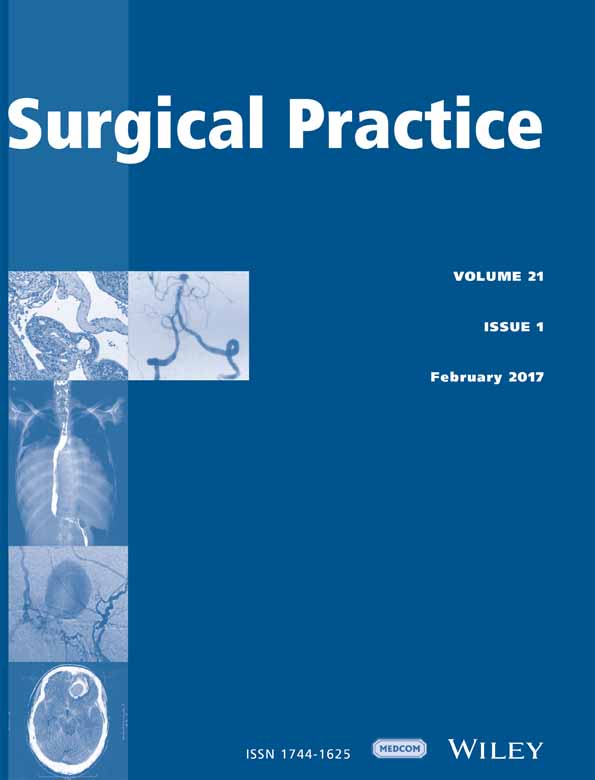Comparing single-incision versus standard laparoscopic gastrostomy in paediatric patients
Abstract
Aim
The aim of the present study was to evaluate the outcomes of single-incision laparoscopic gastrostomy (SILG) compared with standard laparoscopic gastrostomy (LG).
Patients and Methods
Paediatric patients (age <18 years) with gastrostomy placement (+/−concomitant fundoplication) in the past 3 years were reviewed. Demographic data and intraoperative and postoperative events were compared.
Results
Thirty-eight patients were identified (LG : SILG = 25:13). There were no significant differences between (LG vs SILG) age (5.7 vs 4.2 years, P = 0.45) and body weight at operation (15.3 vs 12.4 kg, P = 0.36). The median operative durations for the LG and SILG groups were 38 versus 45 min, respectively (P = 0.21). There was one major complication in the LG group, but none was reported in the SILG group. Seven patients (28 per cent) in the LG group suffered from minor complications compared to two (15.4 per cent) in the SILG group (P = 0.8). Gastrostomy feeding was initiated on postoperative day 1 the in majority of patients in both groups (LG: 92 per cent vs SILG: 100 per cent, P = 0.18).
Conclusion
SILG is technically feasible in paediatric patients, and outcomes were comparable to LG in the present study. This approach should be considered when concomitant procedure is not required in order to minimize the number of surgical wounds.




